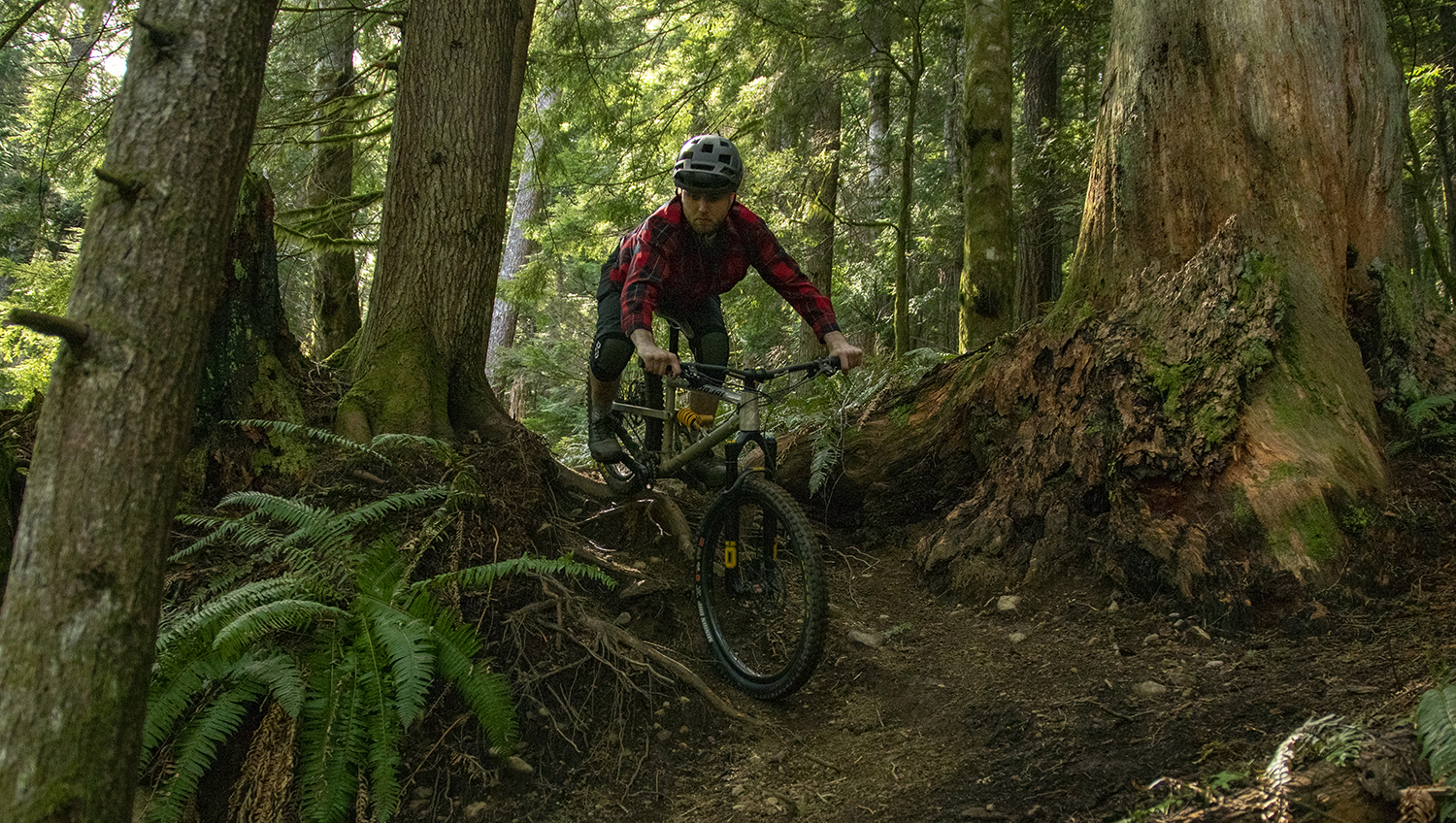
Intro
[10/26/2022 update: We originally ran this roundup a while back, but RockShox has since overhauled their lineup, and so we figured this piece was due for an update. We’ve updated the specs and pricing to reflect current offerings, tweaked a few things to reflect the latest testing we’ve done, and cover the new RockShox forks and how they slot into the overall picture.]
There are more options available to riders looking for a long-travel single-crown fork than ever before, and the landscape only got more complicated when Fox and RockShox introduced the 38 and ZEB. These new models essentially defined a new class of fork, and are substantially stiffer, burlier, and heavier than the 36 and Lyrik that they supplanted as Fox and RockShox’s biggest single-crown offerings. And then Öhlins joined the fray with their new RXF38 going toe to toe with the other two 38mm-stanchioned behemoths. We’ve also spent a lot of time on the Manitou Mezzer, Öhlins RXF36 m.2, Marzocchi Bomber Z1, and EXT Era, and have found them all to be compelling competitors to what Fox and RockShox have to offer. So how do all these forks stack up, and who should be looking most closely at which?
Here, Noah Bodman and I will attempt to answer those questions and provide some guidance for those deciding which fork to put on their next Trail or Enduro bike. We’ll be discussing each of the forks individually, including their specs and available models; comparing them to the others here; organizing the forks on various spectrums (stiffness, sensitivity, support, & weight) based on our experiences; and then closing with which forks we’d personally run for how and where we ride.

Classes of Forks
As I alluded to in the intro, I think it’s basically correct to look at the forks in this guide as spanning two subtly different, but distinct classes — the ~2,100 g, lighter weight options (e.g. Fox 36 and RockShox Lyrik) and their stiffer, heavier counterparts (Fox 38, RockShox ZEB, and Ohlins RXF38). While the differences between the two groups aren’t so dramatic as to make it unreasonable to cross-shop them, or compare and contrast across those lines, the jump in weight and stiffness between the 36 / Lyrik class of forks to their new bigger brothers is more dramatic than any differences within those groups. And while the travel ranges offered in these forks largely overlap, the other forks listed here can all be configured to have less travel than the 38 and ZEB, while the ZEB is the only fork here with a 190 mm travel option.
That ambiguity between classes is a significant part of why we wanted to write this guide. While it’s easy to look at the 36 and Lyrik as the old model forks that have been superseded by the 38 and ZEB, both are still alive and well within their respective brands’ product lines, and we think they still have a place there. So who should be making the jump to the bigger, heavier forks, and who would be better served by their lighter counterparts? And where do competitors like the Manitou Mezzer, EXT Era, and Öhlins RXF36 m.2 fit into all of this? Let’s dig in.
Fox 36

- Wheel Sizes available: 27.5'' and 29''
- Travel Options: 150 and 160 mm; 130, 140, and 170 mm air shafts available
- 2,155g (36 Performance Elite, 29”, 44 mm offset, 150 mm travel, QR axle)
- 36 Factory: Kashima coated stanchions, Grip2 or Fit4 damper.
- 36 Performance Elite: Black anodized stanchions, Grip2 damper. Same chassis as 36 Factory, apart from stanchion finish.
- 36 Performance: Black anodized stanchions, Grip damper. Same chassis as 36 Performance Elite. OE only.
- 36 Rhythm: Black anodized stanchions, more basic, heavier chassis. Grip damper, OE only.
- 36 Factory: $1,149
- 36 Performance Elite: $1,059
Travel changed via air shaft swap.
- Aftermarket forks can be ordered with 150 or 160 mm travel.
- 130, 140, and 170 mm air shafts are also available aftermarket, and in some OE spec forks.
- Grip2 with VVC: Adjustable high- and low-speed compression, and high- and low-speed rebound.
- Fit4: Three position compression adjuster (Open, Medium and Firm settings) with low-speed compression adjustment in the Open setting, and adjustable rebound.
- Grip: Adjustable low-speed compression and rebound.
- Float EVOL NA2: Air spring with auto-equalizing positive and negative pressure. Positive chamber volume adjustable via volume spacers.
- 27.5”: 37 and 44 mm
- 29”: 44 and 51 mm
Up until the 2021-model-year forks rolled out, the 36 was the burliest single-crown in Fox’s lineup, and had held that title since the first version was released in 2005. While the new Fox 38 is now the biggest single-crown Fox makes, the 36 has remained in the lineup, and continues to be a good option for riders who don’t want or need the added stiffness of the 38 — or the ~260 g weight penalty that comes with it. Named for its 36mm-diameter stanchions, the 36 has kept that particular feature, but received a significant overhaul for 2021, and a much more minor update to the crown for 2023.
As with the 2021+ 38 and 40, Fox has given the 36 a new arch, with increased clearance for large-diameter head tubes, as well as air channels on the back of the fork, which allow air and oil to bypass the lower bushing as the fork compresses. The goal there is to improve lubrication and mitigate the effect of built-up air pressure in the lowers making it hard to use full travel. The updated lowers also feature a floating axle design, which compensates for variations in hub width to stop the legs from being pinched together when the axle is tightened, which can contribute to binding as the fork cycles up and down.
Factory and Performance Elite series 36 forks also receive new lower-leg bleeder ports, to further help release accumulated air pressure in the lowers. Push a button on the back of each fork leg, and a valve opens, allowing any extra air to escape. Performance series forks don’t get the bleeders, but their lowers have the provision for them, and they can be added aftermarket if so desired.
[Note that the 36 Rhythm, available on some complete bikes, did not receive the chassis updates. The new chassis is found on the 36 Performance, Performance Elite, and Factory versions.]
As has been the case for a while, Fox offers three different damper options in the 36. At the top of the heap is the Grip2, with adjustable high- and low-speed compression, and high- and low-speed rebound. It’s Fox’s most adjustable, highest performing fork damper, and for 2021 received a significant update in how the high-speed compression adjuster works, using a technology that Fox calls Variable Valve Control (VVC). We go into far more detail on it in our full reviews of both the Fox 38 and 40, if you’re interested. But in short, the idea is to mitigate the downsides that arise from conventional high-speed damping adjusters, which usually apply preload to the valving within the fork, which can cause the damper to feel harsh and spiky when running firmer settings. As we said in those reviews, the design largely delivers on this promise, but comes at the expense of total adjustment range — riders who tend to run very firm high-speed compression damping settings might find that they’re unable to get the new VVC Grip2 damper to get firm enough for their liking, at least without some custom tuning work. Overall, though, it’s an excellent, highly tunable damper and we’re big fans of its performance. The Grip2 damper is available in Factory and Performance Elite versions of the 36.
The other damper option for Factory and Performance Elite 36s is the Fit4 — essentially the more “Trail-oriented” option to the Grip2’s gravity focus. The Fit4 features a three-position compression switch, meant to function a bit like a climb switch on a rear shock, and to firm up the fork for climbing or smoother trails where firmer compression damping settings are desired. The “Open” position has an additional fine-tuning adjustment to set the low-speed compression in that mode. The Fit4 gets a single rebound adjuster, in place of the separate high- and low-speed adjustments on the Grip2. The Fit4 damper is a solid performing and easy to set up damper, but can’t match the smoothness and tunability of the Grip2 option.
Finally, the Performance and Rhythm series 36 get the base Grip damper, with adjustable low-speed compression and adjustable rebound. It’s entirely functional and straightforward to set up, but is less tunable than the higher-end Grip2, and in particular, can’t match that damper’s supportiveness in choppier terrain. The Performance and Rhythm forks are only available as part of complete bikes — riders looking to buy one of these on its own should look at the Marzocchi Bomber Z1, which we’ll discuss in more detail below.
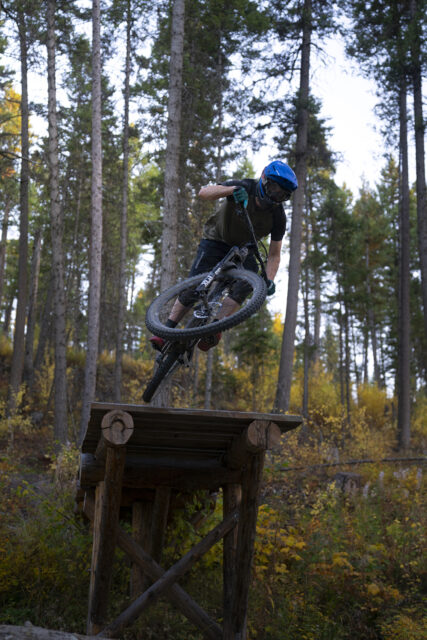
The 36 is only available with an air spring, and its design will be familiar to anyone who’s poked around inside a Fox fork in the last five or so years. It’s a straightforward design, with auto-equalizing positive and negative air chambers (as both Fox and RockShox have been doing for quite a while), and volume spacers that clip to the bottom of the top cap to adjust how much the fork ramps up deeper in the travel. For 2021, Fox did tweak the spring slightly, to increase the negative chamber volume, which slightly improved small-bump sensitivity over prior versions.
The RockShox Lyrik is the biggest competitor to the Fox 36, and when comparing the top-spec versions of each head-to-head, there are some significant differences in ride feel. The Lyrik Ultimate is a little bit better at completely ironing out the trail, especially over small, chattery sections, like exposed roots. The 36 Performance Elite Grip2 provides a bit more feedback as to what the front wheel is doing, and a little more midstroke support. The Lyrik’s chassis is also slightly stiffer and more precise. It’s not a big difference, but it does track slightly better, especially in off-camber sections, and on very steep descents where the front wheel is heavily loaded.
Factory and Performance Elite 36s are the same, apart from the finish on the lowers, and the shiny gold Kashima coating on the stanchions of Factory series forks. Fox claims that the Kashima coating reduces friction and makes for a smoother, more supple fork, but we’ve found the differences in actual on-trail feel to be minor. We’d recommend the 36 Performance Elite Grip2 as the highest bang-for-buck version in terms of performance.
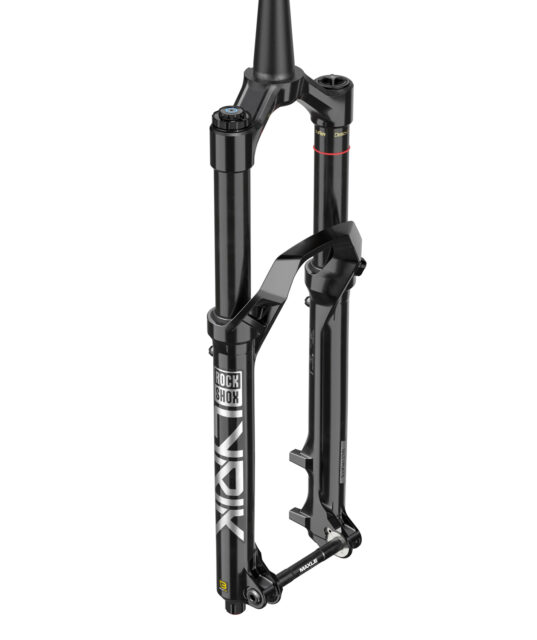
- Wheel Sizes available: 27.5'' and 29''
- Travel Options: 140 – 160 mm in 10 mm increments
- 2,028g (Lyrik Ultimate, 29”, 44 mm offset, 160 mm travel)
- Lyrik Ultimate: Charger 3 RC2 damper
- Lyrik Select+: Charger 3 RC damper. OE only
- Lyrik Select: Charger RC damper
- Lyrik: Rush RC damper. OE only
- Lyrik Ultimate: $1,107
- Lyrik Select: $843
- 140 – 160 mm in 10 mm increments, via air shaft swap
- Charger 3 RC2: Adjustable high- and low-speed compression, and adjustable rebound.
- Charger 3 RC: Same design as Charger 3 RC2, but with adjustable low-speed compression and rebound.
- Charger RC: More basic damper, with adjustable low speed compression and rebound. Substantially different design than Charger 3.
- Rush RC: Base model damper, with adjustable low-speed compression and rebound. Substantially different design than Charger 3 or Charger RC.
- DebonAir+: Air spring with auto-equalizing positive and negative pressure. Positive chamber volume adjustable via volume spacers. Features “Buttercups” on Lyrik Ultimate.
- 27.5”: 37 mm
- 29”: 44 mm
RockShox gave its longstanding Lyrik a big overhaul for the 2023 model year, with the same new Charger 3 damper and DebonAir+ spring that are featured in the ZEB. The air spring chamber volumes have been tweaked a bit to suit the smaller 35mm-stanchioned chassis of the Lyrik and its shorter travel range, relative to the ZEB, but the overall design and goals are similar to that of the ZEB, including the use of the new Buttercups isolators at the bottom of the spring and damper shafts in the Lyrik Ultimate.
But unlike the ZEB, the Lyrik got an all-new chassis, which means that the new spring and damper can’t be retrofitted to older forks. RockShox says that the new chassis cuts about 50 g compared to the outgoing C3 generation, while also being slightly stiffer. As with the updated ZEB, the Lyrik features pressure relief valves in the lowers, and is offered in the same four versions with different damper configurations and options; check out the ZEB section above, or our First Look at the new RockShox lineup for the rundown.
Unfortunately, we haven’t yet been able to get much time on the new Lyrik, but our preliminary take is that it feels a lot like a scaled-down version of the new ZEB — and given their shared damper design and very similar air springs, that doesn’t come as a huge surprise. The ZEB is clearly stiffer, but also substantially heavier than the Lyrik; there’s also less overlap in their respective travel ranges than there was for earlier generations of the forks so some folks will have the choice made for them based on desired travel.
And while RockShox claims that the new Lyrik is slightly stiffer than the old one, my early impression is that those differences feel fairly subtle. The outgoing Lyrik was already pretty good on the stiffness-to-weight front, and the new one is probably a little better, but we’re definitely talking about incremental gains rather than some dramatic makeover.
Compared to the Fox 36, the new Lyrik has substantially better small-bump sensitivity and generally does a better job of muting small chatter, whereas the 36 feels a bit more lively and transmits a touch more feedback to the rider. I wouldn’t call that sensation “harshness,” but the 36 does feel less muted and supremely smooth as the Lyrik, much like the difference between the 38 and ZEB.
We’ll hopefully be able to get more time on the new Lyrik soon, and will update this with more concrete findings once we do, but we wanted to put out an update promptly since the new RockShox offerings make for a big shakeup in the fork landscape. More to come soon.

- Wheel Sizes available: 27.5'' and 29''
- Travel Options: 150 and 160 mm; 130, 140, and 170 mm air shafts available
- 2417g (38 Factory, 29”, 44 mm offset, 170 mm travel)
- 38 Factory: Kashima coated stanchions, Grip2 or Fit4 damper
- 38 Performance Elite: Black anodized stanchions, Grip2 damper. Same chassis as 38 Factory, apart from stanchion finish.
- 38 Performance: Black anodized stanchions, Grip damper. Same chassis as Performance Elite.
- 38 Factory: $1,249
- 38 Performance Elite: $1,149
- 38 Performance: $989
Travel changed via air shaft swap.
- Aftermarket forks can be ordered with 160, 170, or 180 mm travel.
- 150 mm air shafts are also available aftermarket, and in some OE spec forks.
- Grip2 with VVC: Adjustable high and low speed compression, and high and low speed rebound.
- Grip: Adjustable low speed compression and rebound.
- Float EVOL NA2: Air spring with auto-equalizing positive and negative pressure. Positive chamber volume adjustable via volume spacers.
- 27.5”: 37 and 44 mm
- 29”: 44 and 51 mm
Fox added the 38 to their lineup for 2021, supplanting the 36 as their biggest single-crown fork. As the name suggests, it has 38mm-diameter stanchions, and is designed to be an option for riders looking for a stiffer chassis with greater steering precision and improved tracking through rough terrain. That added stiffness comes at a weight penalty of around 300 g, depending on the exact configuration. The difference in stiffness is significant, particularly for bigger riders, and those tending to charge harder in steeper, rougher terrain. Compared to the forks here with smaller stanchions, the 38 tracks noticeably better, is more precise in holding a line, and is stiffer fore-aft under hard braking and the like.
That’s not to say that everyone should be abandoning the 36 in favor of the 38 though — far from it. The 38 is substantially heavier, and for more varied Trail-bike use, the 36 is going to be plenty of fork for most people.
In terms of design, the 38 shares a great deal in common with the revised model-year 2021+ Fox 36. The overall design language is nearly identical, and the lowers share the same set of features that the newest 36 received, including the air channels, air bleed ports, and floating axle. Check out our full review of the 38 for more details on that.
The 38 shares the updated Grip2 VVC and base Grip dampers with the 36, but in keeping with its gravity-oriented focus, the Fit4 option is dropped for the 38. There’s also no 38 Rhythm available as of publishing this article, paring the list of versions down to Factory, Performance Elite, and Performance.
As with the 36, the Factory and Performance Elite versions use the same Grip2 damper, and differ only in terms of finish, both on the lowers and on the stanchions. The 38 Performance shares its chassis with the 38 Performance Elite, but gets the base Grip damper with adjustable low-speed compression and adjustable rebound, as compared to the Grip2’s adjustable high- and low-speed compression and high- and low-speed rebound.
The air spring of the 38 is in some ways similar to that of the 36, but has one notable difference: instead of using the inside of the stanchion for the air piston to ride on, the 38 adds a separate tube inside of the stanchion for this purpose. Mostly, this allows Fox to tune the progression of the fork a bit more — very long-travel, air-sprung, single-crown forks tend to be quite progressive, due to what basically boils down to packaging constraints. The extra tube in the 38’s air spring gets around this, allowing for a wider range of progression adjustment (again via volume spacers) and also might help a little bit with binding in the air spring due to chassis flex, as an added benefit.
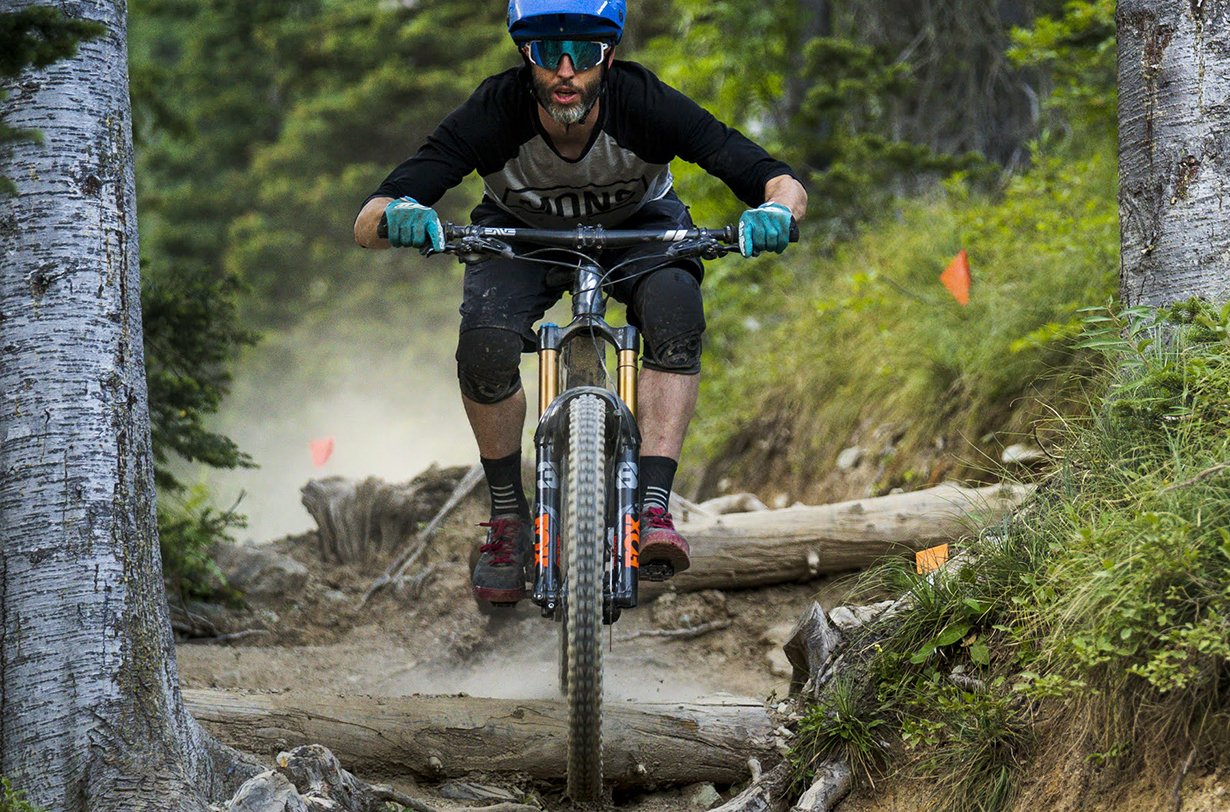
As far as suspension performance goes, the 38 feels broadly similar to the 36 (when comparing both with the Grip2 damper). The difference in chassis stiffness, and the added precision that brings to the 38, is by far the greatest point of differentiation between the two. If anything, the 38 is a tiny bit more supple on smaller bumps, with a touch better small-bump compliance than the 36, but the difference is subtle. On the flip side, the 38 has less of a tendency to feel harsh and spiky though choppy, high-speed impacts (such as braking bumps), or when cornering. The stiffer chassis binding up less is likely a big part of the reason why. As with the 36, the latest Grip2 VVC damper in the 38 does an uncommonly good job of mitigating the harsh, spiky behavior that can be felt when running the high-speed compression adjuster cranked up on many other forks, but also has a relatively light high-speed compression tune. Riders accustomed to running their high-speed compression adjusters very firm on most forks might be wishing for a stiffer setting out of the 38.
Both generations of the RockShox ZEB (the original A1 version which ran from 2021 to 2022 model years, and the new MY 2023 A2 version) feature a slightly stiffer chassis than the 38, and both can be run with significantly firmer compression damping settings, especially the newer A2 generation. And the new ZEB A2, in particular, feels substantially more planted and smooth over smaller chatter than the 38 does, while the 38 provides more feedback as to what the front wheel is doing, and feels more lively / less dead. Whether or not that’s a good thing is likely subject to personal preference, but the two feel significantly different in that regard.

- Wheel Sizes available: 27.5'' and 29''
- Travel Options: 150 – 190 mm in 10 mm increments
- 2,329g (ZEB Ultimate, 29”, 44 mm offset, 170 mm travel)
- ZEB Ultimate: Charger 3 RC2 damper
- ZEB Select+: Charger 3 RC damper. OE only.
- ZEB Select: Charger RC damper
- ZEB: Rush RC damper. OE only.
- ZEB Ultimate: $1,159
- ZEB Select: $869
- Charger 3 RC2: Adjustable high- and low-speed compression, and adjustable rebound.
- Charger 3 RC: Same design as Charger 3 RC2, but with adjustable low-speed compression and rebound.
- Charger RC: More basic damper, with adjustable low speed compression and rebound. Substantially different design than Charger 3.
- Rush RC: Base model damper, with adjustable low-speed compression and rebound. Substantially different design than Charger 3 or Charger RC.
- DebonAir+: Air spring with auto-equalizing positive and negative pressure. Positive chamber volume adjustable via volume spacers. Features “Buttercups” on ZEB Ultimate.
- 27.”: 37 mm
- 29”: 44 mm
The ZEB is RockShox’s take on a bigger 38mm-stanchioned single crown, meant to go head-to-head against the Fox 38 and Öhlins RXF38.
RockShox gave the ZEB a big overhaul for the 2023 model year, and in doing so, addressed my biggest complaint with the first-generation model — its lack of midstroke support. Most of that credit is due to the new air spring, which RockShox now calls DebonAir+. The principles behind the design haven’t changed a whole lot — it’s still a conventional layout with a single positive chamber and auto-equalizing negative chamber by way of a dimple inside the stanchion — but the chamber volumes and location of the dimple relative to the topout position of the air piston have been tweaked, and the most notable change that’s resulted is that the new version stays up in its travel far better than its predecessor, especially in steeper sections where you’ve got a lot of weight on the front wheel due to the trail pitch. Three-chamber designs with a second positive spring chamber (the Öhlins twins, Manitou Mezzer Pro, and EXT Era) are all still even more supportive through the midstroke, but the ZEB’s combination of excellent small-bump sensitivity plus quite good support is impressive, and a big step up from the original version.
The damper design of the top-tier ZEB Ultimate is also new. The Charger 3 damper found in the current version features the same adjustable high- and low-speed compression, plus adjustable rebound found on the prior-generation Charger 2.1, but the damper has been redesigned from the ground up, with the primary goals of creating more consistent damping without high-speed spiking and harshness, and minimizing the amount of what RockShox calls “cross talk,” i.e., the impact of the low-speed compression adjuster on the high-speed damping behavior, and vice-versa. The Charger 3 damper now uses a spring-backed IFP instead of a bladder design in the Charger 2.1, and RockShox has rearranged the compression adjusters so that the middle of the range is now the default “zero” position from which the adjustment range is indexed (in contrast to the fully-closed setting on most forks being the reference point). The goal there is to make setup easier, and while it’s maybe not the most dramatic change imaginable, it is a nice touch.
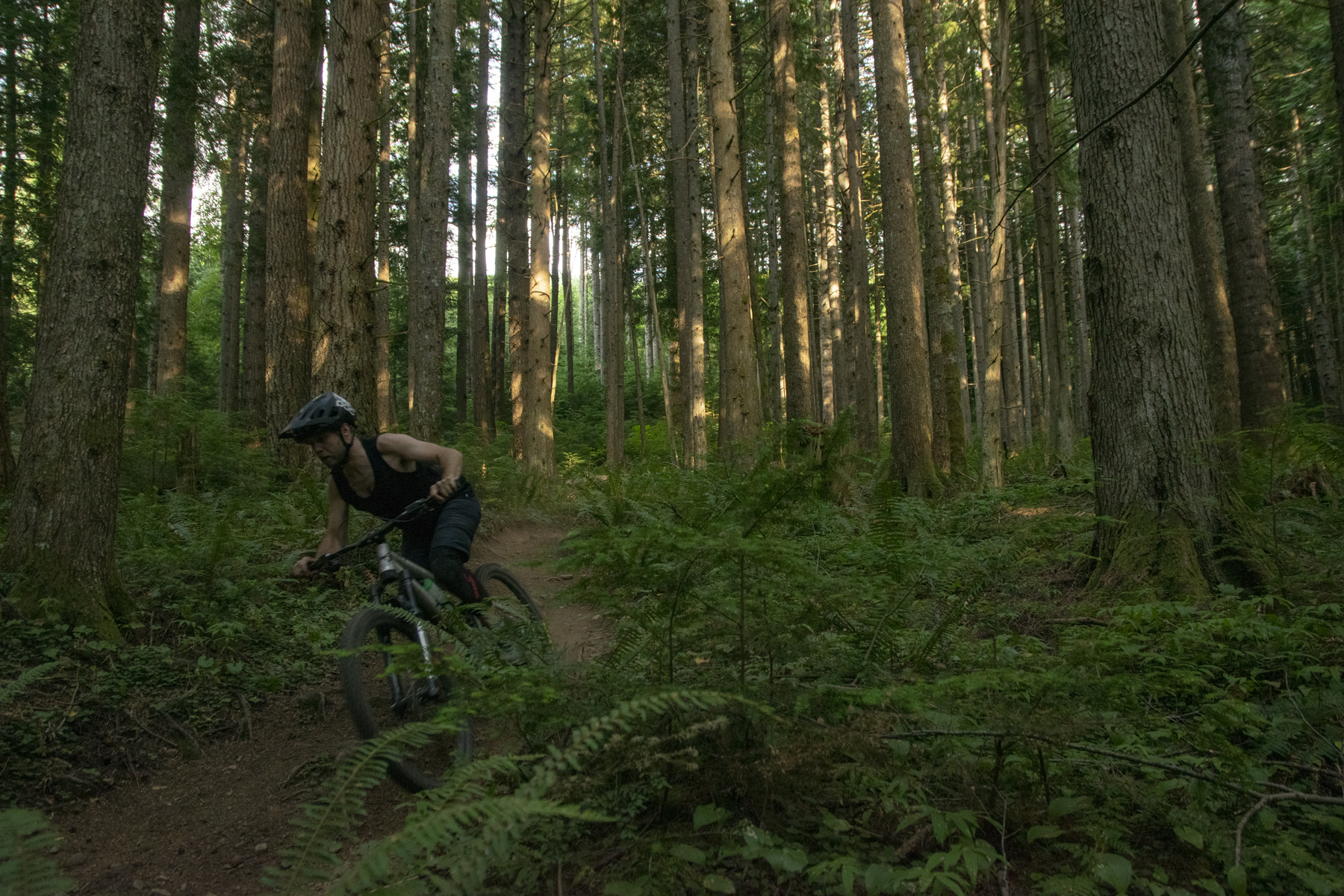
The OE-only ZEB Select+ gets the Charger 3 damper as well, but in a version with just adjustable low-speed compression and adjustable rebound. The less-expensive ZEB Select uses a more-basic Charger RC damper with the same adjustments as the Select+, but from a less-sophisticated damper design (which carries over from the prior-generation ZEB Select), and finally the base ZEB uses an also-new Rush RC damper with adjustable rebound and compression.
RockShox has also added what they call “Buttercups” to the bottom of the spring and damper legs in the ZEB Ultimate — rubber isolators that are meant to absorb small trail chatter and make for a smoother, more muted ride and help prevent hand and wrist fatigue. And the results are good — the new ZEB Ultimate does indeed feel impressively smooth over small, chattery impacts, and does a nice job of mitigating hand fatigue over longer days on the bike. To be sure, there’s a lot more that goes into that than just the Buttercups — the chassis smoothness, spring and damper performance, etc. all play a role as well — but the combined package does work very well.
The chassis hasn’t changed as much, but the ZEB was already the stiffest fork here, and it’s not like a major update was needed. The ZEB Ultimate gets new, longer bushings and all versions now have pressure relief valves on the lowers (similar to those found on the higher-end versions of the Fox 36 and 38) to vent out excess air that can wind up trapped in the empty space in the lowers, and in doing so, compromise small-bump sensitivity. Those details aside, though, the chassis is unchanged from the original ZEB A1, so the new spring and damper can be retrofitted to the older model.
Compared to the Fox 38, the new ZEB Ultimate has similar or maybe slightly better midstroke support from the spring, but with notably better small-bump sensitivity. The new Charger 3 damper is also capable of producing much firmer high-speed compression damping than the Grip2 VVC damper in the 38, and does an impressive job of doing so without substantial spiking or harshness. The ZEB’s chassis is also appreciably stiffer than that of the 38. The ZEB’s ride feels overall more muted and less lively than that of the 38, which is probably more a matter of personal preference than one of either approach being universally better.
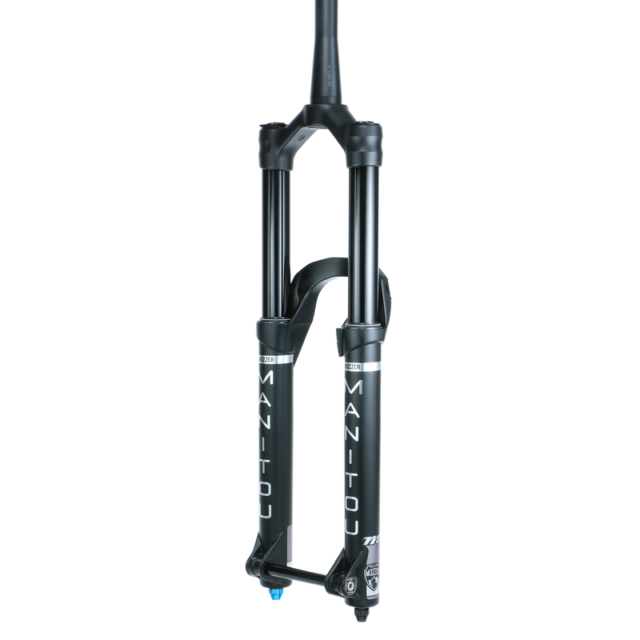
- Wheel Sizes available: 27.5'' and 29''
- Travel Options: 140 – 180 mm in 10 mm increments
2,085g (Mezzer Pro, 29er, 44 mm offset, 170 mm travel)
- Mezzer Pro: MC2 damper and IRT spring
- Mezzer Expert: VTT-6P damper and Expert spring
- Mezzer Pro: $1,100
- Mezzer Expert: $850
- 140 – 180 mm in 10 mm increments, via internal spacer
- MC2: Adjustable high and low speed compression, and adjustable rebound. Features a hydraulic bottom out circuit.
- VTT-6P: Adjustable compression and adjustable rebound.
- Infinite Rate Tune: Air spring with auto-equalizing positive and negative pressure, and secondary “IRT” chamber to adjust midstroke support and progression.
- Expert Air: Air spring with auto-equalizing positive and negative pressure. Positive chamber volume adjustable via volume spacers.
- 27.5”: 37 and 44 mm
- 29”: 44 and 51 mm
The Manitou Mezzer Pro has been around for a few years now and I’m still a huge fan — in particular, it’s an extremely compelling option for riders who prefer to run a firm, supportive setup in their forks.
Perhaps the most significant feature of the Mezzer Pro is its IRT air spring, which deserves a lot of the credit for its exceptional supportiveness. Unlike conventional air springs, like those used on the Fox / RockShox / Marzocchi offerings here, the Mezzer Pro adds a second, independently adjustable chamber to the positive air spring. Check out our full review of the Mezzer Pro for more details, but in short, the main positive and negative springs function as normal, and automatically equalize pressure between the two. The secondary (“IRT”) chamber sits on top of the main positive spring, and runs considerably higher pressure than the main chamber. A floating piston separates the two, but doesn’t move until the fork compresses enough that the pressure in the main chamber reaches that of the IRT chamber. At this point, once the pressures equalize, the IRT chamber effectively adds its volume to the main chamber, and the fork ramps up more slowly in the later part of the stroke.
What all this means is that it’s possible to set up the Mezzer Pro to ramp up very aggressively through the middle part of the stroke, without it then ramping up even more aggressively deep in the stroke, causing harshness and / or making it difficult to use full travel. It’s an effective system and adds a great deal of adjustability to the fork, but does make for a slightly more complex setup. For one, there’s simply a second air pressure setting to keep track of, but the combination of the two does also mean that the Mezzer Pro is somewhat more sensitive to air pressure settings than most forks.
Riders willing to put in the effort, though, will be rewarded with an exceptionally supportive fork, with fewer downsides to setting up for all that support than most forks. The Mezzer chassis is also very impressive. It’s not as exceptionally stiff as the Fox 38 or (especially) the RockShox ZEB, but it’s also significantly lighter than both. The Mezzer is significantly more stiff and precise than either the Fox 36 or RockShox Lyrik, and comes in at a weight that’s competitive with both.

The MC2 damper in the Mezzer Pro is also a good-performing unit, with adjustable high- and low-speed compression, and adjustable rebound. Its performance and feel are most similar to that of the Charger 2.1 RC2 in the pre-2023 RockShox Lyrik and ZEB Ultimate variants. The new Charger 3 damper is a bit smoother and lower-friction than the MC2, but can’t achieve quite as firm and supportive high-speed damping out of the box. Compared to Fox’s Grip2 damper, the Manitou MC2 isn’t quite as low friction and sensitive and is a little more harsh when running relatively firm high-speed compression settings, in particular. On the flip side, though, it’s able to run a much firmer high-speed compression setup than the Grip2, and riders worried that they might need more high-speed compression damping than the notably-lightly-damped Grip2 can offer would be well served by the MC2.
One detail where the MC2 damper does set itself apart is in the inclusion of a separate hydraulic bottom out (HBO) circuit. The HBO circuit takes over in the last ~30 mm of stroke in the fork, and adds additional compression damping as the fork nears bottom out, to help control those big hits. The HBO circuit isn’t externally adjustable, but can be re-valved as part of a fork service if needed, and does a great job of controlling big impacts.
While the Mezzer Pro is exceptional in terms of midstroke support and tunability, its small-bump sensitivity is a bit less stellar. It’s a tradeoff that a lot of riders will be totally happy with, especially bigger and / or more aggressive riders who find themselves running relatively firm fork setups, but the tradeoff exists nonetheless.
Manitou also offers a less-expensive version, the Mezzer Expert. It shares its chassis with the Mezzer Pro, but substitutes a more conventional air spring without the secondary IRT chamber, and a more basic damper with six-position adjustable compression and adjustable rebound. We haven’t tested the Mezzer Expert, but expect it to give up a bit of the exceptional support of the Mezzer Pro, due to the loss of the IRT spring.
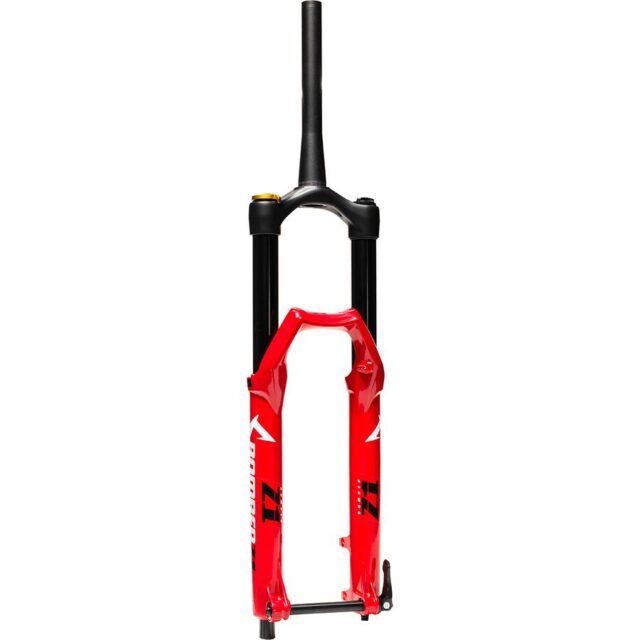
- Wheel Sizes available: 27.5'' and 29''
- Travel Options: 140 – 180 mm (varies by wheel size and spring type, see below)
- 2,172 g (Bomber Z1 Air, 29”, 44 mm offset, 140 mm travel)
- Bomber Z1 Air
- Bomber Z1 Coil
- Bomber Z1 Air: $729
- Bomber Z1 Coil: $779
- Bomber Z1 Air: 150 – 180 mm (27.5” version) and 140 – 170 mm (29” version) in 10 mm increments, via air shaft swap. 130 and 140 mm air shafts available aftermarket for both wheel sizes.
- Bomber Z1 Coil: 160 – 180 mm (27.5” version), 150 – 170 mm (29” version) via movable spacers.
- Grip: Adjustable low-speed compression and rebound.
- Float EVOL NA2: Air spring with auto-equalizing positive and negative pressure. Positive chamber volume adjustable via volume spacers.
- Coil spring, with four available spring rates.
- 27.5”: 44 mm
- 29”: 44 and 51 mm
Despite the different branding, the Bomber Z1 is actually essentially a Fox 36 Rhythm — but with the option for a coil spring. Fox bought Marzocchi a few years ago, and the two now share a lot of technology, including the Grip damper and Float Evol air spring used in the Bomber Z1 Air. The Bomber Z1 does get its own lowers, with Marzocchi’s signature M-shaped arch, but the two otherwise share a platform.
The Bomber Z1 Coil uses the same chassis and Grip damper as the Bomber Z1 Air, but substitutes a coil spring into the left leg. We’ve not yet tested the Bomber Z1 Coil, but would expect the typical coil-spring tradeoffs to apply — coil springs tend to offer better small-bump compliance and a more linear spring rate, but limit bottom-out resistance and ability to fine-tune spring rate. Marzocchi only offers four spring rates for the Bomber Z1 Coil, so riders looking to make fine adjustments to their spring settings, or those at the extreme ends of the bell curve when it comes to weight, are likely to be better served elsewhere.
As we said of the Fox 36 Rhythm, the Marzocchi Bomber Z1 Air that we have tested is a solid performing fork, and it comes in at a significantly lower price than its higher-end siblings. It lacks the range of adjustability of the Grip2 damper that’s available in the 36 and gives up a little bit both in terms of small-bump sensitivity and support on higher-speed impacts, but overall it works well and is far more straightforward to set up than the more complex Grip2 damper, in particular.
Compared to the RockShox Lyrik Select, which is a more apples-to-apples pairing (in terms of both price and features), the Bomber Z1 Air is both a touch heavier and not quite as stiff or precise, but offers slightly better midstroke support. There’s no coil-sprung version of the Lyrik, though, making the Bomber Z1 an obvious choice for riders interested in a simple, comparatively inexpensive coil fork.

- Wheel Sizes available: 27.5'' and 29''
- Travel Options: 90 – 180 mm (varies by spring type, see below)
- 2,111 g (RXF 36 m.2 Air, 27.5”, 38 mm offset, 170 mm travel)
- RXF36 m.2 Air
- RXF36 m.2 Coil
- RXF36 m.2 Air: $1,350
- RXF36 m.2 Coil: $1,350
- RXF36 m.2 Air: 140 – 170 mm, via air spring cartridge / spring tube swap. Spring parts for 90, 100, 120, 130, and 180 mm travel available aftermarket.
- RXF36 m.2 Coil: 130 – 170 mm, via adjustable spacer.
- TTX18, with adjustable high- and low-speed compression, and adjustable rebound
- Air: Three chamber air spring with auto-equalizing positive and negative springs. Independently adjustable ramp up chamber.
- Coil: Coil spring with five spring rates available
- 27.5”: 38 and 46 mm
- 29”: 44 and 51 mm
Swedish brand Öhlins have been a mainstay in the motorsports suspension world since the 1970s, and more recently entered the mountain bike market. We’ve been testing their RXF36 m.2 Air fork, and are very impressed with its performance.
The RXF36 m.2 Air uses a conceptually similar air spring design to the IRT spring used in the Manitou Mezzer Pro. As with the Mezzer Pro, the result in the RXF36 m.2 Air is an exceptionally supportive fork with a great deal of adjustability in the spring setup. Despite the design similarities though, the Öhlins’ air spring is a bit less sensitive to small differences in pressure settings — it’s accurate to say that the overall tuning window is a bit narrower on the RXF36, but on the plus side, it’s also easier to dial in.
The RXF36 m.2 Air chassis is around the middle of the pack for both stiffness and weight. The RXF36 m.2 Air is not as stiff or precise as the Manitou Mezzer or RockShox Lyrik, despite being a touch heavier than both; compared to the Fox 36, the Öhlins is both a tiny bit stiffer and slightly lighter. The RXF36 is both lighter and significantly less stiff than the RockShox ZEB or Fox 38.
Where the RXF36 m.2 Air does clearly beat out the Manitou Mezzer Pro is in terms of small-bump sensitivity. The combination of supportiveness and sensitivity that it offers is particularly impressive. Riders intrigued by the exceptional support offered by the Mezzer Pro, but unsure about the tradeoffs that it makes when it comes to small-bump sensitivity would be well served by the RXF36 m.2 Air. On the flip side, the Mezzer Pro is slightly lighter, notably stiffer, and $250 less expensive than the Öhlins, making it a great option for hard-charging riders who want a ton of support and are okay with a bit less small-bump sensitivity.
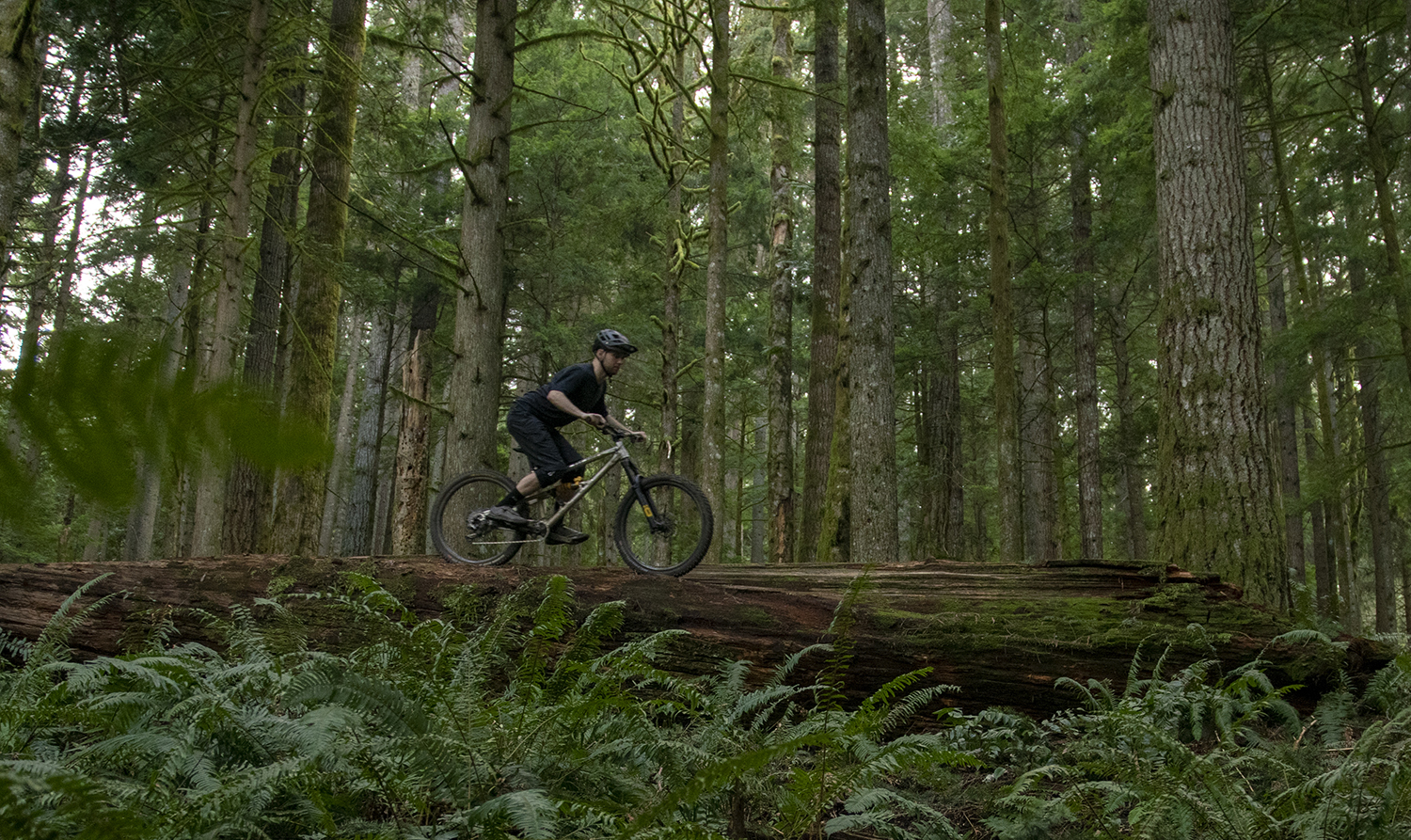
The RXF26 m.2 uses a twin-tube damper with adjustable high- and low-speed compression, and adjustable rebound. It’s impressively low-friction and smooth, but comes with an uncommonly firm compression damping tune. On most forks, my preferred high-speed compression setting tends to fall somewhere around the middle of the range, and on the 2021+ Fox 36 and 38 Grip2, I tend to run the high-speed compression most of the way closed. With the Öhlins, though, my preferred settings actually wound up with the high-speed compression all the way open. At 165 lb / 75 kg, I’m not an especially heavy rider, but do tend to favor relatively firm fork setups for my weight, and lighter and / or less aggressive riders might find the compression damping to be excessively firm.
The high-speed compression knob on the RFX36 m.2 also serves as a climb switch — in the first three positions, it works as a normal high-speed compression adjuster. In the fourth, it activates a climb mode, akin to what you’d find on many rear shocks. I’m on the record as saying that I don’t see much need for these sorts of “pedal modes” on forks as they’re far less prone to pedal bob than rear shocks, especially on longer-travel Enduro types of bikes, but if you feel differently, the Öhlins has you covered.
Öhlins also offers a coil-sprung version of the RXF36 m.2, which we haven’t tested. An interesting note regarding the spring options, though, is that the air version of the spring doesn’t use the inside of the stanchion as part of the air spring, in contrast to most forks on the market. The upshot of this is that it’s possible to switch back and forth between the coil and air spring assemblies as desired. With most forks, using a coil spring runs the risk of scratching the inside of the stanchion, and preventing an air spring from sealing properly afterward. Since the RXF36 m.2 doesn’t seal against the stanchion, there’s no limitation there. Öhlins does spec a slightly different damper tune for the air and coil versions, though, so simply swapping springs won’t produce the exact same results as the out-of-the-box setups for both.
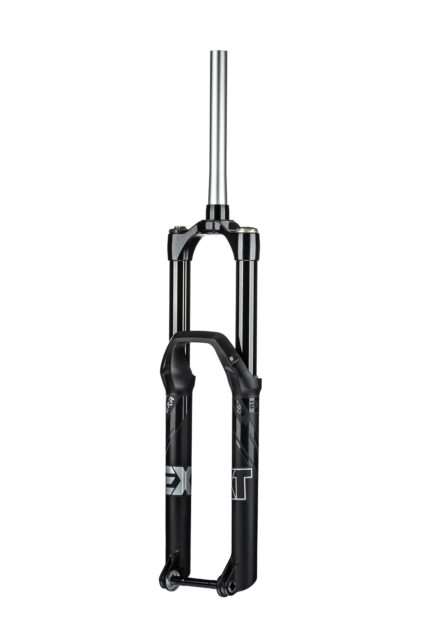
- Wheel Size Available: 29''
- Travel Options: 140 – 170 mm (via spacer)
- 2,271 g (170 mm travel)
- $1,950
- 140 – 170 mm in 10 mm increments, via spacers
- HS3: Three chamber air spring with auto-equalizing positive and negative springs. Independently adjustable ramp up chamber. In line coil spring for additional sensitivity
- HS3: Three-chamber air spring with auto-equalizing positive and negative springs. Independently adjustable ramp up chamber. In line coil spring for additional sensitivity
- 44 mm
The Era is the first (and so far only) foray into the fork world for the Italian brand, and it’s an excellent fork for riders looking for a setup that’s got both strong midstroke support and a very good small-bump sensitivity — and who are willing to pay for it. Like the Manitou Mezzer Pro and Öhlins RXF36 m.2 air, the Era uses a dual-positive chamber air spring design for improved midstroke support, but it takes things a step further by also adding a short-stroke coil spring, meant to help with small-bump sensitivity in the very first part of the travel before the air spring takes over.
In many ways the Öhlins RXF36 is the closest performance comparison here, but the Era offers a bit better small-bump sensitivity and a notably stiffer chassis. The Era also has a considerably wider range of compression damping adjustment, making it an especially good choice for riders who like the sound of the Öhlins, but are worried that its notably firm compression damping tune is going to be more than they’re looking for.
Compared to the Manitou Mezzer Pro, the Era has substantially better small-bump sensitivity, but isn’t quite as stiff, weighs more, and comes in at nearly double the price. Despite not having an exceptionally stiff chassis, the Era does really shine when it comes to avoiding feeling like it’s binding up when it is being heavily loaded.
Compared to the more mainstream options from Fox and RockShox, the Era has substantially better midstroke support (the three dual-positive air spring forks in this roundup stand head and shoulders above the more conventional ones in that regard). And while its chassis isn’t quite as stiff as the 38 or (especially) the ZEB, the Era feels a touch stiffer than the 36, and in the same ballpark as the Lyrik.
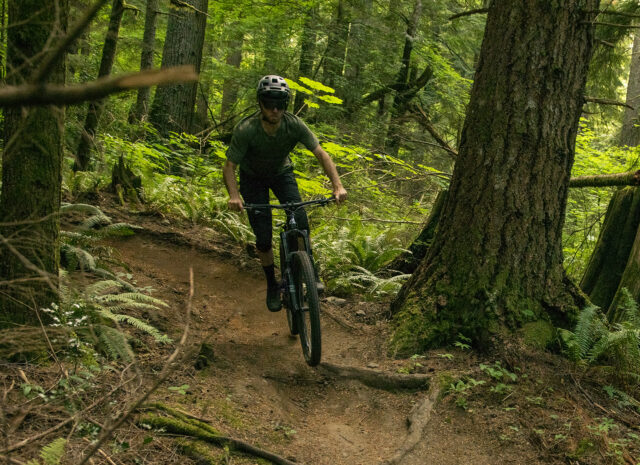
The Era is also only available for 29’’ wheels and with 44 mm offset. I don’t see the latter as being much of a limitation for a modern Enduro fork, but the lack of a wheel size option is a bummer for those of us who are still fond of 27.5’’ wheels. Of course, there’s nothing stopping you from putting a 27.5’’ wheel in a 29er fork, but I’d still rather see an option for a shorter offset and axle to crown height for use with smaller wheels.
If you are running a 29’’ front wheel though, and are willing to pay a premium for a fork with the highest combination of both midstroke support and small-bump sensitivity in this guide, the Era really is outstanding. It’s also impressively consistent, even when undergoing heavy fore-aft loading (e.g. when braking hard on a steep, rough section of trail) and was totally trouble- and creak-free in nearly four months of testing. Riders who don’t care as much about midstroke support might be better off saving their money and going with a less expensive option, and the Manitou Mezzer Pro is a great, super-supportive option if you’re willing to look past its middling small bump sensitivity. But for riders looking to have their cake and eat it too, the Era is outstanding.
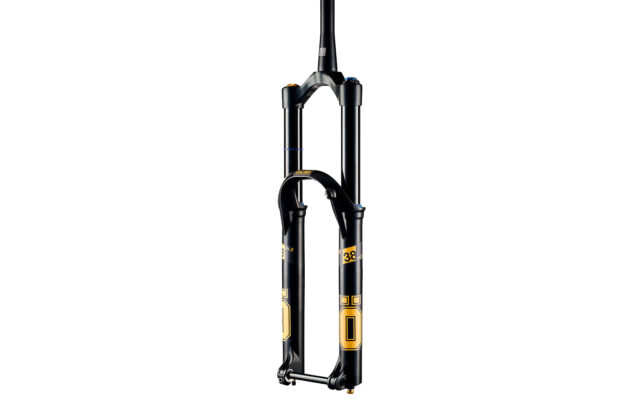
- Wheel Size Available: 29''
- Travel Options: 160, 170, 180 mm
- 2,317 g (44 mm offset, 170 mm travel)
- $1,450
- 160, 170, 180 mm
- TTX18, with adjustable high- and low-speed compression, and adjustable rebound
- Three-chamber air spring with auto-equalizing positive and negative springs. Independently adjustable ramp-up chamber.
- 44 & 51 mm
The RXF38 is essentially a beefed-up version of the RXF36 m.2 Air — as you’d expect it’s got 38 mm stanchions and a correspondingly burlier chassis, which comes at a roughly 200 g weight penalty over its smaller sibling. The spring and damper design are essentially the same, but there’s no coil version of the RXF38 on offer, at least for now. It’s also only available for 29’’ wheels.
In short, the RXF38 really does feel like a burlier RXF36 — the spring and damper performance do feel extremely similar, though if anything the high-speed compression tune on the RXF38 is a touch lighter, at least for the versions we tested. The chassis is substantially stiffer, which makes a very noticeable difference in how precisely the front wheel tracks in rough, off-camber terrain, under hard braking, and/or when weighting the front wheel in steep terrain.
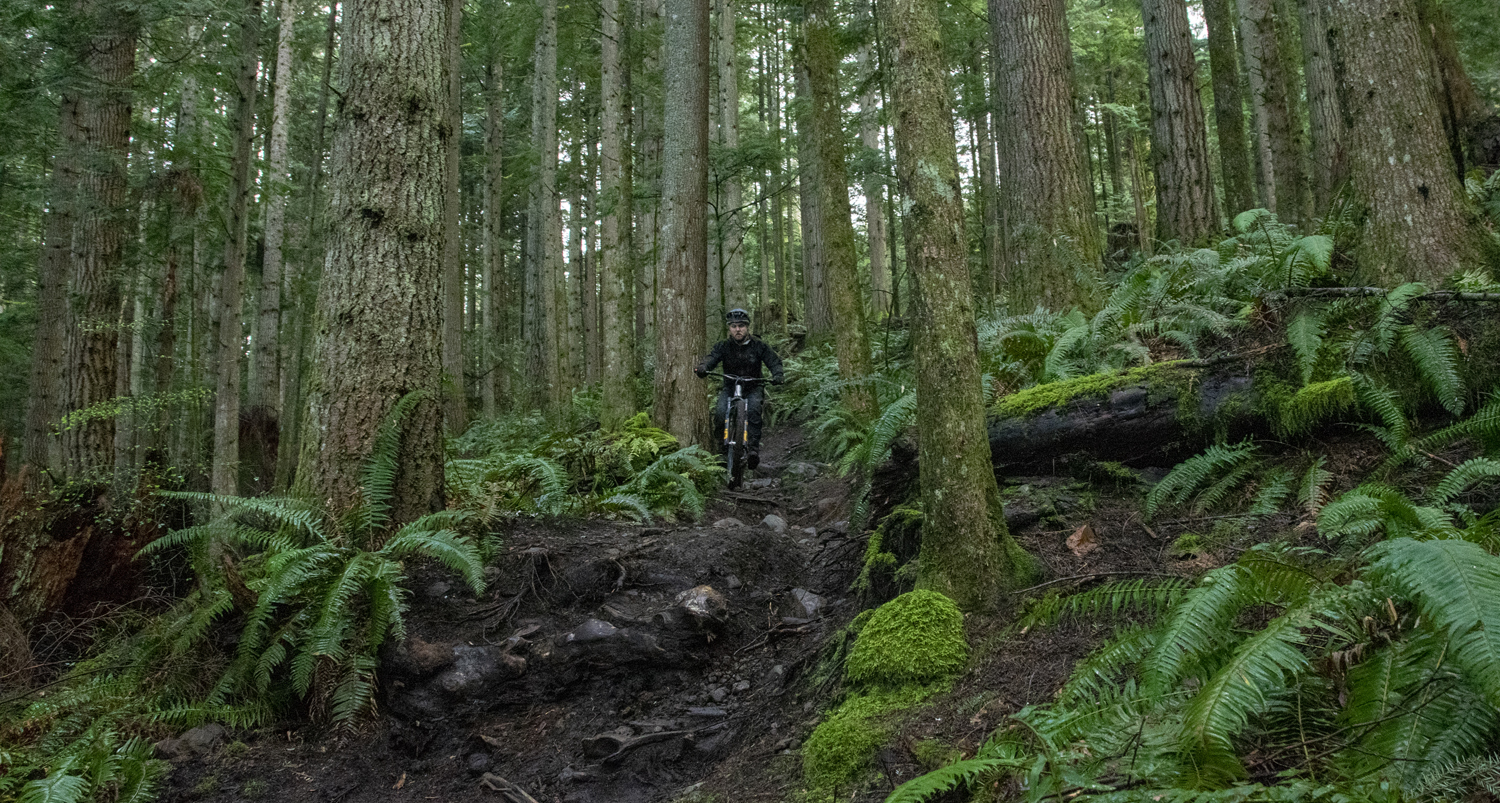
Take the stuff we said about the suspension performance of the RXF36, above, and pair it with a chassis that feels about as stiff as the Fox 38 and you’ve got a good picture of the RXF38. It’s excellent.
Spectrums
Stiffest, Most Precise
- RockShox ZEB (The 2023 ZEB A2 doesn’t feel appreciably different from the 2021-2022 ZEB A1 in this regard)
- Öhlins RXF38 m.2
- Fox 38
- Manitou Mezzer
- EXT Era
- RockShox Lyrik*
- Öhlins RXF36 m.2
- Marzocchi Bomber Z1
- Fox 36
Least Stiff / Precise
* We’ve got limited time on the new 2023 Lyrik at this point so this rating is somewhat provisional. That slot is where we put the prior-generation model, and the new one feels maybe slightly, but not dramatically stiffer.
Most Supple / Sensitive
- RockShox ZEB A2 (2023 ZEB Ultimate tested)
- Fox 38 (Factory Grip2 tested)
- RockShox ZEB A1 (2021 ZEB Ultimate tested)
- EXT Era
- Öhlins RXF38 m.2
- RockShox Lyrik D1 * (2023 Lyrik Ultimate tested)
- Öhlins RXF36 m.2 (RXF36 m.2 Air tested)
- RockShox Lyrik C3 (2021 Lyrik Ultimate C3 and Lyrik Select C3 tested)
- Fox 36 (Performance Elite Grip2 tested)
- Manitou Mezzer (Mezzer Pro tested)
- Marzocchi Bomber Z1 (Bomber Z1 Air tested)
Least Supple / Sensitive
* We’ve got limited time on the new 2023 Lyrik at this point so this rating is somewhat provisional. We’ll update when we’re able to get more time on the new Lyrik.
Most Supportive
- Manitou Mezzer (Mezzer Pro tested)
- EXT Era
- Öhlins RXF38 m.2
- Öhlins RXF36 m.2 (RXF36 m.2 Air tested)
- RockShox ZEB A2 (2023 ZEB Ultimate tested)
- RockShox Lyrik D1* (2023 Lyrik Ultimate tested)
- Fox 36 (Performance Elite Grip2 tested)
- Fox 38 (Factory Grip2 tested)
- RockShox Lyrik C3 (2021 Lyrik Ultimate C3 and Lyrik Select C3 tested)
- Marzocchi Bomber Z1 (Bomber Z1 Air tested)
- RockShox ZEB A1 (2021 ZEB Ultimate tested)
Least Supportive
* We’ve got limited time on the new 2023 Lyrik at this point so that rating is somewhat provisional.
Lightest
- RockShox Lyrik D1 (RockShox’s claimed weight, 2023 Lyrik Ultimate)
- Manitou Mezzer (Mezzer Pro tested)
- RockShox Lyrik C3 (Lyrik Ultimate tested)
- Öhlins RXF36 m.2 (RXF36 m.2 Air tested)
- Fox 36 (Performance Elite Grip2 tested)
- Marzocchi Bomber Z1 (Bomber Z1 Air tested)
- RockShox ZEB A1 (2021 ZEB Ultimate tested)
- EXT Era
- Öhlins RXF38 m.2
- RockShox ZEB A2 (2023 ZEB Ultimate tested)
- Fox 38 (Factory Grip2 tested)
Heaviest
So Which One Would We Buy?
To be clear, we’re taking our reviewer hats off for this section, and talking about which fork we would buy for ourselves, personally, if spending our own money. This isn’t any kind of objective statement on which fork is the “best” or anything like that. As I hope we’ve made clear by now, there are a lot of good products here, which have their own strengths and weaknesses, and it’s much more accurate to look at it as a case of matching the ideal fork to the rider and use case, than any one fork being all things to all people.
If I were putting this fork on a bike where I planned to run it at 140–160 mm of travel or so, the choice is pretty easy: the Manitou Mezzer Pro. As I’ve said a whole lot on Blister, I tend to favor fairly firm, supportive setups for my forks, particularly for relatively gravity-oriented riding, and the Mezzer Pro excels with that kind of setup in mind.
If I cared a bit more about small-bump compliance, I’d be tempted by the Öhlins RXF36 Air. It’s nearly as supportive as the Mezzer Pro, and significantly more supple off the top, but if it’s my money on the line, the stiffer chassis and lower cost of the Mezzer Pro wins out. And as good as the EXT Era is, I’d personally have a hard time justifying its lofty price tag — at least until Jonathan gives me a big raise.
Once things start getting to the long travel end of the range, though, the picture changes a bit. While the Manitou Mezzer Pro is an impressively stiff fork, particularly given its weight, it’s not as stout as any of the new 38mm-stanchioned big guns, and those bigger, stiffer forks start to become more appealing as the travel inches higher — both because those sorts of bikes are meant to be ridden harder, but also because as forks grow in travel, so goes their axle to crown length, both making the fork less stiff, and increasing the loads placed on it.
I’ve loved the chassis on the ZEB since it first came out, but the lackluster midstroke support of the first-generation version made it hard for me to go that route. And so I’m very pleased that RockShox has dramatically improved the air spring in the new A2 generation with that in mind — and it’s worked. Now, the ZEB still isn’t as especially supportive as the dual-positive air-chambered forks here (the Manitou Mezzer Pro, Öhlins RXF 36 and RXF 38, and EXT Era) but it’s now a tick above the Fox 38, and that’s pretty good. The new ZEB also has the best small-bump sensitivity of any of the forks here, the stiffest chassis, and a very good damper. It’s extremely good.
All that said, the truly outstanding support of the Öhlins RXF 38 is still really appealing. The RXF 38 isn’t quite as stiff as the ZEB, and has notably less good small-bump sensitivity, but especially if we’re talking about a bike that I’m planning to ride on a ton of really steep trails and/or one with relatively firm, supportive rear suspension, that extra support from the RXF 38 starts to be a big draw. And so I’m honestly left with a near toss-up between the RXF 38 and the ZEB, with the deciding factor being how I think each would pair with the rear suspension setup of the bike in question. The more plush and planted the bike, the more the ZEB sounds like the right match; for something firmer and more supportive, the RXF 38 it is.

When you said “trail” I was thinking 34 mm stancions….. I don’t think I need a 36 (or more) on my 140/116 trail bike, but I also prefer said bike with Rekons vs DHF, DHR, Aggressors and the likes. Maybe you meant a class of bikes in the “trail/enduro” category, not trail or enduro. Or maybe I’m just not able to push it hard enough ;-) Cheers and thanks for the continued quality output.
Bill — you’re definitely right that these are at the burlier end of the Trail spectrum. The lines get blurry depending on your preferences and so on, but for the sake of keeping things focused, we limited this one to forks that wouldn’t be out of place on an Enduro bike.
We will have some reviews coming for lighter forks and Trail bikes soon, so stay tuned!
Same club, here, though the more I ride my 36, the more I think I “need” it. :-)
I’m building up my lovely steel Nimble9 as a SS, I want to go weight weenie but 1400 forks don’t seem to be light.
I have not been able to find a Mezzer in 140mm by 29″, I am considering a Helm MKII but your review has me hopeful for a Manitou as I plan on a LOT of standing sprints up every single hill.
I just bought a Mezzer Expert for my hardtail, and found out that they sell them in 180mm or 160mm travel lengths. All of these models can have the travel internally adjusted between 180-140mm. My fork included the parts to adjust travel, I just had to buy a few tools and watch some YouTube videos to do it. Rad fork so far!
Hey guys, I live. In Asheville, NC I am a suspension technician and I am a dealer for fox, Marzocchi, rockshox and Vorsprung, push industries and DSD! You can mail in your suspension and on 2-4 days I am shipping them back and I also charge less than the msjor companies that take months and really don’t do the best jobs sometimes. You can can find me on IG Pisgah Bike Works or shoot me an email and I am happy to help my fellow riders.
Thanks,
Dylan Schemel
Wish the Cane Creek Helm Mark II Coil was included, but I know you can’t test every single fork out there!
We’d love to get on one too, but haven’t been able to make it happen yet. Maybe sometime down the line.
I now own the Z1 Coil and CC Helm Mk2 Coil. Z1 in 160 on my OG Slash (best long travel trail bike ever), and the Helm in 140 on my Fuel EX Swiss Army Knife Bike.
Both are phenomenal in all regards for rugged trail riding. Small bump sensitivity and sharp-edged chunk plushness is about a jillion times better than any air fork I’ve ridden. Well worth the weight penalty.
David and Noah,
Excellent information! Just curious if the subject of “cost of ownership” or ability to maintain has come up at all in your discussions on forks and if it factors into your recommendations? This is a tough topic to summarize and I would not want to touch it at all if I had to do the homework.
I have been bitten by parts availability (not COVID related) and long lead times in the past with customer service from certain companies. An honest talk on what happens when routine maintenance is needed or when a fork needs to be sent in for service deserves some attention because every bike owner goes through these woes at some point.
Cheers,
Tommy B
RS forks and Manitou forks are home serviceable. Even a full rebuild doesn’t require too many speciality tools. I don’t know about Era, but if you want to work on your own stuff I’d stay clear of Ohlins and Fox.
Lower leg service on all these forks is quite straightforward, but Ohlins and EXT don’t encourage at home damper work. I’d push back on the Fox part of your statement though — some of their rear shocks are tough to service at home, but the forks are all plenty doable.
This article might possibly change my next bike purchase. I’m between three new bikes with about that same travel 150 & 160 fork. Each bike has a different fork: Lyrik, 36 and 38. As I want a 50/50 trail/(no rock garden) park bike I wanted something stiffer. The Lyrik bike is about 2k cheaper than the other bikes. Mostly because it’s alloy and not carbon, but for a burly all mountain bike, carbon isn’t that important to me. But with the money saved, I’m starting to lean toward the Lyrik then adding a Vorspring Secus on the front to increase support. It still won’t be as stiff as the 38, but with the other $1,600, I’ll find some other bike bling to distract me from thinking about it. Either that, or I’ll just feel cool having a Vorsprung on my fork. I’ll tell them it’s a nitro boost canister like in Mad Max or Fast and Furious.
I know it’s not stock but I have to plug the Zeb + DSD Runt combo. Fixes all the issues with the C1 air spring and makes for an absolutely stellar fork.
DVO, hoe
Their Onyx fork is legitimately way better than all these ritzy, highly advertised forks.
Good luck.
Peace
First off thank you for such a comprehensive review. I was curious if you have any experience running a Diaz Runt on RS or Fox forks? If so I’d like to know if they come with any drawbacks in terms of sensitivity/control as well as how they stack up against the 3spring options form Manitou/Ohlins/EXT. Specifically I’m looking to get more support out of my 160mm Lyrik without creating a ton of harshness
We don’t, unfortunately. I’ve been curious to try one but haven’t been able to make it happen yet.
Lyrik + secus = bliss
I miss the Cane Creek Helm MKII Air. Any impression about that fork? Where it will be set in test spectrum?
Really helpful article, thank you so much for that!
Kinda shocked that the Z1 did so poorly against the competition. I’ve just come from a bike with Fox 34 performance to z1 and the z1 feels better in all respects.
for a 140-150 travel trail/enduro bike what would be better marzuki forks or rockshox
Any update on new lyrik?
What an awesome review, just bought the zeb ultimate.